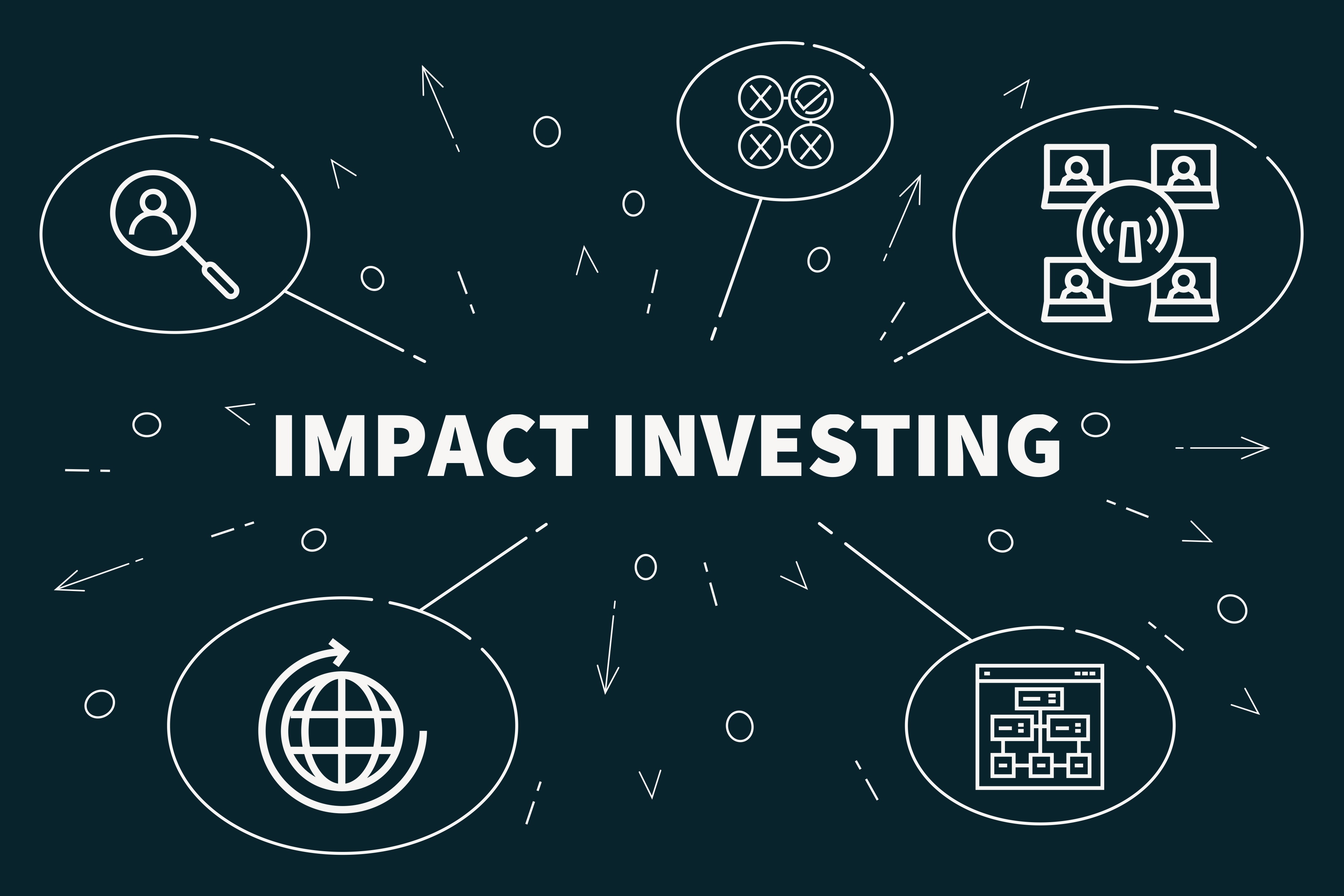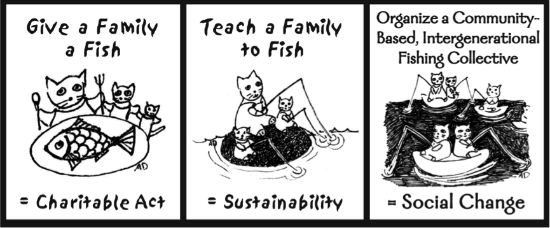July 15, 2016
Getting to the Heart of Impact Investment in India
By Kartik Desai

Impact investment is generally understood in India to involve for-profit equity or debt investment in early-stage ventures that are delivering basic services to the poor -- giving them access to affordable housing, financial services, education, health or energy -- or helping to provide them jobs and better livelihood opportunities. According to this definition, India has thus far seen approximately US$2 billion of impact investments into some 300 companies. And the pace of this activity is picking up.

Source: Hawaii People's Fund
More and more people are becoming familiar with the related concepts of impact investing and social entrepreneurship. These ideas are commanding increasing attention in business, academia and government, and also among the public at large, with hundreds of articles and dozens of research studies. MBA graduates want to get in on a piece of the action. Billions of dollars have been flowing in, away from traditional NGOs, to this new model of socio-economic development that harnesses market forces. And some political leaders are also taking note, in emerging markets like India as well as developed countries like the UK and US.
But no one seems to really understand or agree on what exactly 'impact investing' means. Many people are confused by its overlap with other concepts like venture philanthropy, socially responsible investing (SRI), corporate social responsibility (CSR), or environmental, social and governance reporting (ESG).
Many people are confused by the overlap of impact investing with venture philanthropy, socially responsible investing (SRI), corporate social responsibility (CSR)...
A casual observer may say it has something to do with doing social good, but while making money in the process. And this raises a host of questions and contradictions, for it upends the traditional separation of business and philanthropy that is firmly rooted in the minds of most people. Is this even possible? How do you define social good? How much money can you make? The fact that self-defined impact investors themselves cannot agree on a definition does not make it any easier for those on the outside to have a clear view.
And those on the outside can be quite critical. One can hear traditional venture capitalists sneering at impact investing as a way to generate the high returns typical of the VC industry, asking questions like, "We have Facebook, Google and dozens of other success stories. Other than microfinance, what are the examples of successful (i.e. high financial return) investments made by you guys?"
At the same time, other VCs have acknowledged the returns-generating potential but claimed that they too are 'impact investors' because their investees create many jobs among low-income citizens. Taking the analogy to the extreme, a large real estate company like DLF, or rather its construction contractors, who employ lakhs of labourers, could be argued to have greater impact than all livelihood-related impact investments combined. Defining impact more broadly, it can be argued that Twitter enabled social change during the Arab Spring, so it too should qualify. Similarly, any investment that is related to clean-tech or renewable energy is argued by some to constitute an impact investment.
It is thus easy to see why the definition of impact investing is the subject of much debate.
The importance of intentionality
A fair global definition of the subject comes from the Rockefeller Foundation, the organisation that originally coined the term 'impact investing' in 2007 at a conference in Italy. Since then they have set up the Global Impact Investing Network (GIIN), the concept of B-Corps (firms that have both financial and social objectives) and a set of standards to measure social impact across sectors.
Their definition is (emphasis added):
"Impact investments are investments made into companies, organizations, and funds with the intention to generate measurable social and environmental impact alongside a financial return."
The most critical part of this definition is the intention to create impact.
To meet the basic definition of impact investment, we must match intention for proactive impact with measurement of those results.
To meet the basic definition of impact investment, we must match intention for proactive impact with measurement of those results. But it is hard enough to create objective criteria within a particular sector, say affordable education or housing. It should be honestly acknowledged that objectively measuring impact across sectors remains an academic exercise subject to varying interpretations.
To practically help people define what qualifies as an impact investment and what does not, there is a simple framework that helps articulate the degree of social 'intent' that is associated with a particular financial investment:

Source: Case Foundation
The spectrum from 'Impact Motivated' to 'Impact Certified' highlights increasing levels of intent, measurement and transparency.
Many investors are 'Impact Motivated' to the extent that they want to do good - for example, sell organic food that improves health, or invest in an ed-tech company that fosters learning. However, they do not qualify as impact investors because they do not commit themselves to explicit measures of social impact which can be measured.
Most self-defined social enterprises in India fall in the middle 'Impact Committed' category. While they commit themselves to social goals like educating low-income children or improving the livelihoods of farmers or artisans, their social metrics are not formally validated by external auditors like their financial statements. Doing so in the future would move them up the spectrum to 'Impact Certified'.
India is the global lab for impact investing
While Rockefeller's global definition is helpful, its application in India needs adjustment. India is unique because every major social problem exists in this country, but we also have the largest number of social entrepreneurs in the world. Their enterprises are working to address our challenges using business principles. In short, India is the global laboratory for social impact.
In this context, the Indian Impact Investors Council -- an industry association representing more than 30 impact funds that have invested more than a billion dollars in social enterprises in India -- has added to the criteria of intentionality the additional filter of an explicit focus on low-income beneficiaries (defined as households with annual income of less than ₹3 lakh per year) as well as a focus on market-based approaches that are scalable.
What makes impact investing [compelling] is its potential to find market-based solutions to social problems, which can then be scaled in partnership with the government and industry.
Thus defined, impact investment is generally understood in India to involve for-profit equity or debt investment in early-stage ventures that are delivering basic services to the poor -- giving them access to affordable housing, financial services, education, health or energy -- or helping to provide them jobs and better livelihood opportunities, such as in agriculture or artisan-based industries. According to this definition, India has thus far seen approximately US$2 billion of impact investments into some 300 companies, including 30 exits, the largest of these in the financial inclusion sector. And the pace of this activity is picking up, with many of India's leading impact funds raising additional capital, and new entrants into the market such as high net worth individuals and corporations.
But despite the heady numbers and the headlines that they generate, it is useful to remind oneself that even with all this growth, impact investment is inconsequential compared to the massive social spending done by other stakeholders, most notably the government, but also the NGO sector and CSR initiatives by businesses. What makes impact investing such a compelling subject is its potential to find market-based solutions to pressing social problems, which can then be scaled in partnership with the government and industry. Indeed, the future of the social impact sector is all about this type of collaboration.
To understand the power of impact investing, one only needs to look at the success of Indian microfinance. A movement that was created by social entrepreneurs looking to create impact in a scalable manner has scaled to an US$8 billion industry and is now part of the mainstream financial services scenario in the country -- with eight out of 10 of the small bank licences awarded by the RBI being given to erstwhile microfinance companies that started as social businesses supported by India's early impact investors.
What will be the next such social innovation that scales to impact millions of lives and generates billions of dollars in revenue? What business model, which entrepreneur, will be able to achieve this? These are the questions that lie at the heart of impact investment and which make it such an exciting field to be involved in.
[Originally published in Huffington Post on July 15, 2016]
https://www.huffingtonpost.in/kartik-desai/getting-to-the-heart-of-i_b_9345524.html